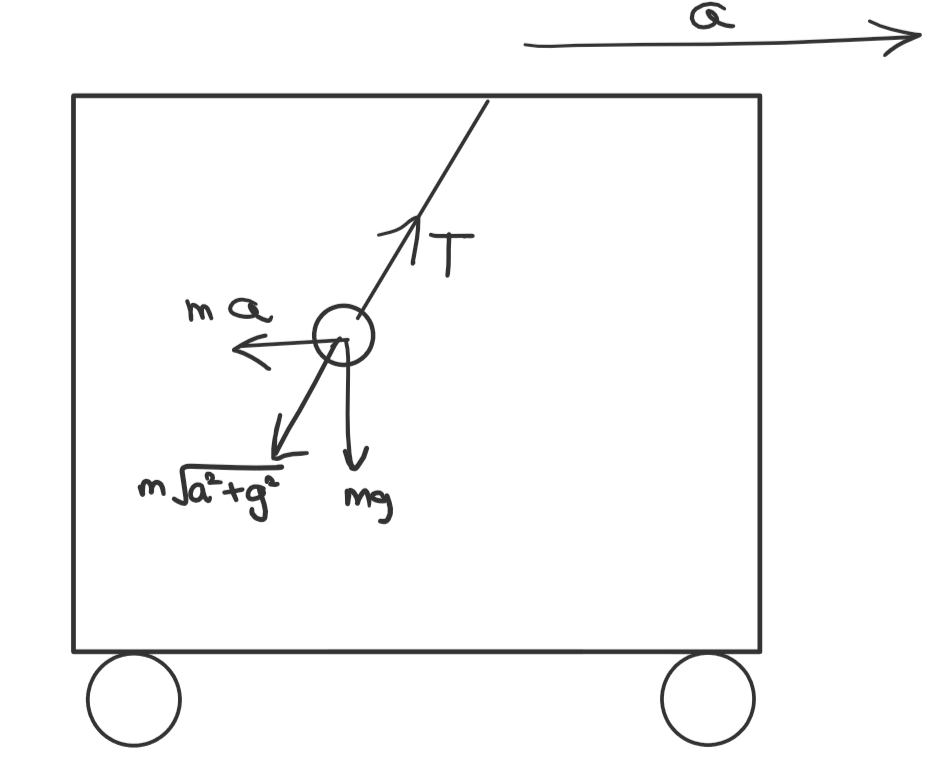Suppose I have a simple pendulum oscillating in an accelerated frame then my textbook says that the time period of the pendulum is no longer given by:
$$ T = 2\pi\sqrt{\frac{L}{g}} $$
but by:
$$ T = 2\pi\sqrt{\frac{L}{a_{eff}}} $$
where $a_{eff}$ is the magnitude of vector sum of the acceleration due to gravity, $g$ and acceleration of the frame $a$.
Can anyone explain why it is so?




